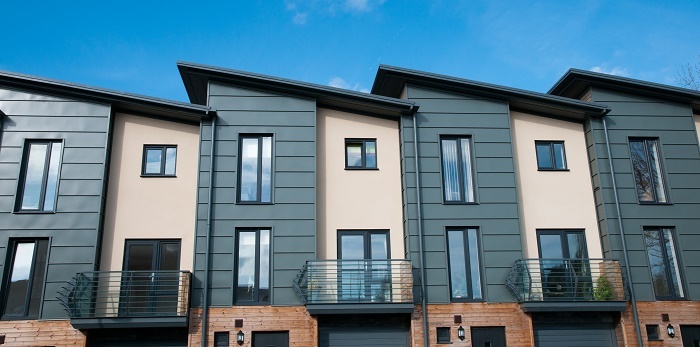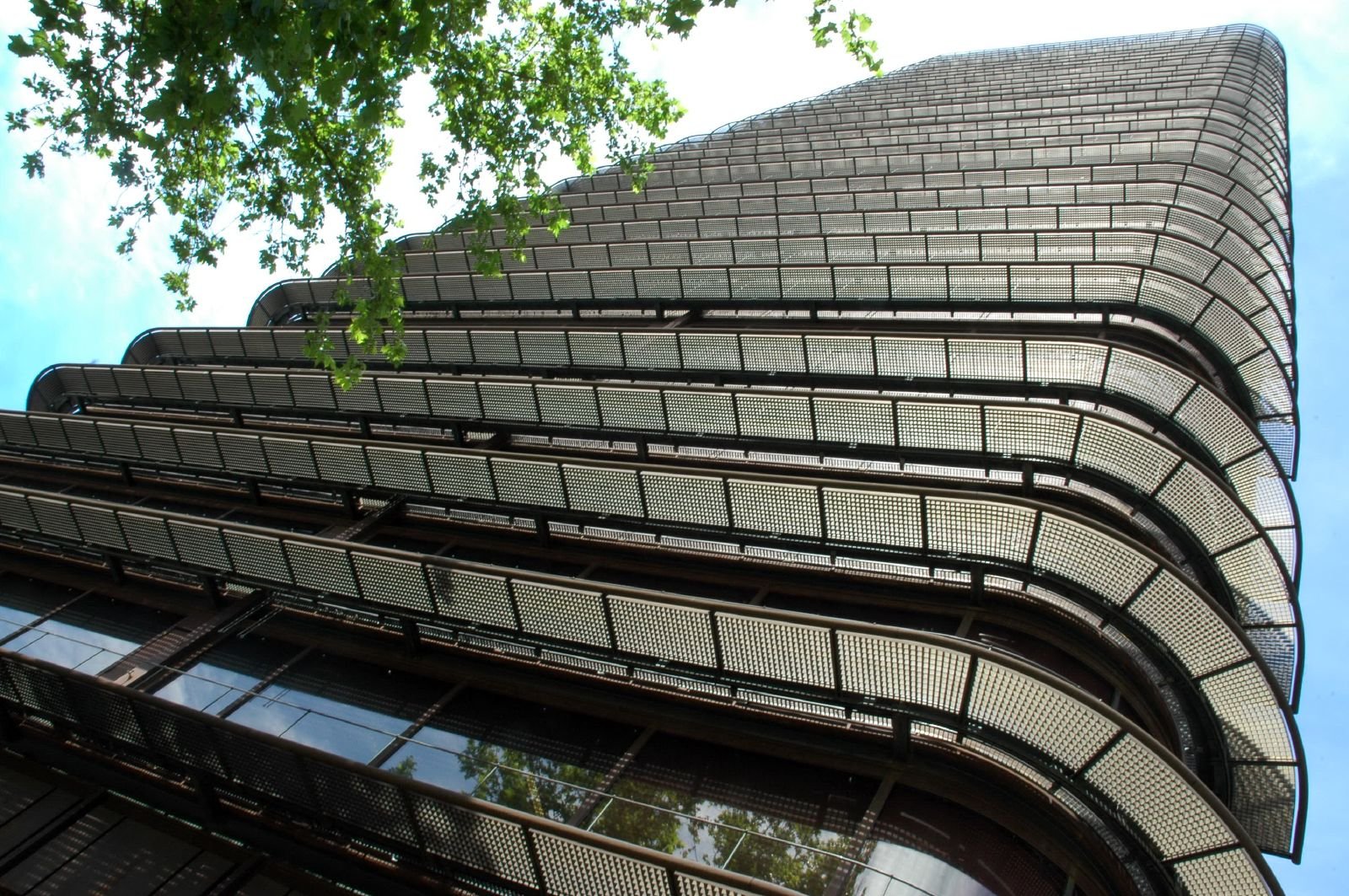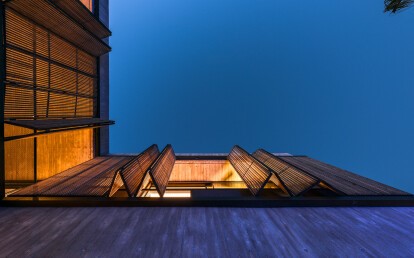
Atamate against overheating 2: energy-efficient mitigation
The Atamate building operating system (atBOS) can control a building’s services to mitigate overheating. As required by Part O of the UK building regulations, it can prioritise passive cooling by opening windows and dynamic shading but if necessary, it can operate mechanical ventilation and cooling as efficiently as possible.
 A companion article described how atBOS collects data to assess whether a building has an overheating problem and if necessary, to inform mitigation measures both for the wellbeing of its occupants in compliance with Part O of the UK building regulations which we have described elsewhere.
A companion article described how atBOS collects data to assess whether a building has an overheating problem and if necessary, to inform mitigation measures both for the wellbeing of its occupants in compliance with Part O of the UK building regulations which we have described elsewhere.
Here we describe how atBOS can go beyond describing the problem to solving it by controlling the relevant building services. As required by Part O, atBOS prioritises passive cooling but if mechanical systems are needed, it can use occupancy control to only cool rooms where the building occupants will benefit from the energy expenditure.
Motorising the windows
The simplest way to cool a building is to open the windows and Part O’s simplified method of mitigating overheating is based on cross ventilating rooms by opening windows on opposite facades. However, depending on manual window opening has the same problem as any other manual measure to control an indoor environment: someone who lives in a building usually has more pressing priorities and only thinks of doing something when they’re already uncomfortable.
 Valentina Fabi of Politecnico di Torino led a review that showed that most of us open them when we get uncomfortably hot and close them when we get uncomfortably cold, setting the indoor environment constantly fluctuating between uncomfortable temperatures. An impact on comfort may also impact energy expenditure. A common problem is that windows are often opened when the heating or air conditioning is still switched on. Windowframe switches enable atBOS to detect when a window is open and switch off any heating or cooling devices in the room.
Valentina Fabi of Politecnico di Torino led a review that showed that most of us open them when we get uncomfortably hot and close them when we get uncomfortably cold, setting the indoor environment constantly fluctuating between uncomfortable temperatures. An impact on comfort may also impact energy expenditure. A common problem is that windows are often opened when the heating or air conditioning is still switched on. Windowframe switches enable atBOS to detect when a window is open and switch off any heating or cooling devices in the room.
However, the limitations of depending on occupants to open and close windows can be more profound than that. Part O’s methods depend on purge and cross-ventilation which are familiar to building designers but rarely to the people who occupy the homes they design. Part O’s dynamic modelling method assumes windows will be opened and closed at certain temperatures but once again, that assumes that monitoring the temperature and operating the windows accordingly will be at the front of the mind of an occupant who may be concerned about feeding the kids or bingeing their Netflix boxset.
When windows are left to the occupants, the temperature will only ever settle at a comfortable level through a coincidence of weather and building physics.
Automating the windows and placing them under atBOS control resolves the problem because once the occupants have set their preferred comfort temperature, atBOS controls the windows to deliver it. Motorised windows have other features that may be beneficial in certain situations:
- People living with impairments can find it physically difficult to open windows but they can have full control of motorised windows, overriding the automation using the atBOS user interface or accessible switches if they wish to do so.
- By continuously monitoring the internal and external temperature, atBOS can be programmed to apply purge ventilation by opening all windows when the indoor temperature is above the comfort level and higher than the outdoor temperature.
- A building prone to overheating even when the windows are open will need an active cooling system like air conditioning. Automation with atBOS can integrate the two approaches, initially opening the windows and only when the temperature rises above a predefined comfort level, closing the windows and engaging the aircon.
- If windows overlook a street, opening them may be an effective way to cool a building but at times, they may admit unacceptable levels of noise or pollution. The atBOS ceiling sensor measures both noise and a range of air quality parameters and could react to unacceptable levels by closing the windows and engaging air conditioning.
Other approaches may be preferable in different situations but the salient point is that automation based on continuous monitoring of the indoor environment simultaneously delivers comfort, convenience and energy efficiency.
Dynamic shading
One way to avoid the need for cooling is to prevent a building from heating up in the first place by limiting solar gains. One solution suggested by Part O is windows made of solar control glass. Such ‘low-g’ glass, so-called because it has a low g-value (ratio of internal heat gain to incident solar radiation), certainly limits solar gains but has several potential disadvantages:
- It is expensive to install.
- It limits the daylight admitted to a building which, as described in the Chartered Institute of Building Service Engineers (CIBSE) TM40 document, which we have discussed in a previous article, may impact the wellbeing of a building’s occupants.
- Limiting solar gains may mitigate overheating in the summer but during the winter, beneficial heat gain can reduce the heating load.
 |
 |
| A tower block fitted with a brise-soleil (Emilio [CC / Flickr]) | Rabel 1400 automated shutters (Rabel Systems) |
| Two approaches to external shading | |
An alternative approach to external shading is to use overhangs or a brise-soleil which shade windows during the summer but allow direct sunlight during the winter when the sun is lower in the sky.
In Mediterranean architecture, external shutters are often used to limit solar gains. Shutters that can be opened or closed manually are a type of dynamic shading because they can be adjusted in response to the position of the sun and the intensity of sunlight.
However, manually operated shutters share the problem of manually operated windows, in that we only manually operate them when we are already uncomfortable. Nor would Mediterranean-style wooden shutters be practical in modern British buildings, which tend to have much larger windows to make the most of the lower light levels. However, automation enables two possible ways to apply dynamic shading:
- Automation enables shutters to be placed on a building’s façade, external to the windows.
- If windows are double or triple glazed, a motorised curtain or blind between the panes can block solar gains before it enters the indoor environment.
The potential for solar gains is at its highest during the day when a residential building is often empty. Automating the shading allows atBOS to prevent the building from heating up when it is unoccupied. When the occupants are at home, atBOS can open the shading in occupied rooms to maximise the daylight that they experience.
Control of mechanical cooling
While atBOS is designed to maximise the contribution of passive cooling, some buildings still require mechanical cooling systems that require electrical energy. While atBOS can operate any system, most fall into one of three categories:
- Mechanical extract ventilation: The primary role of mechanical extract ventilation is to maintain air quality but the same system can replace uncomfortably warm inside air with cooler outside air if required. This option is likely to be used in rooms where windows cannot be opened for purge ventilation because of security concerns or noise pollution.
- Recirculating air: In a home with modern standards of insulation, a possible approach is to combine the heating and ventilation systems. Air is drawn in, heated to the comfort temperature and on its way out, it is passed through an exhaust air heat pump that extracts the heat energy into the home’s hot water tank. In the process, the exhaust air is cooled to around 6°C (43°F). If the indoor temperature is above the comfort level, some of that cooled air can be recirculated back into the home. The atBOS controls how much of the exhaust air is recirculated, ensuring that the comfort temperature is maintained without compromising air quality or during a heatwave, it may draw air directly from outdoors as a source of heat energy for the hot water system and use the high-quality exhaust air for cooling.
- Mechanical air conditioning: Some buildings are so prone to overheating that there is no alternative to mechanical air conditioning and while the energy efficiency of aircon units has improved substantially in the last 20 years, there is no way to avoid their consuming a substantial amount of energy. Energy consumption can be limited by atBOS control by measures like occupancy control, so that the aircon is only engaged if someone is in the room, switching it off if someone opens a window and monitoring energy consumption and alerting the occupants if a grille needs to be cleaned.
Whatever system is installed, atBOS will always use passive cooling systems first and only use the mechanical system if it proves inadequate to prevent an occupied room from overheating.
Atamate against overheating
As our two-part series has described, atBOS can be used in three different stages of a building project to mitigate overheating:
- Collecting data before a renovation, enabling a rational choice of the most energy-efficient mitigation measures.
- Operating a building’s systems to ensure that occupied rooms do not overheat.
- Post-occupancy evaluation to ensure that a building complies with the requirements of the Part O regulations.
At atBOS, we have regarded mitigation of overheating as a design priority for some time so we are gratified to see that it has now been written into regulation.
Ask us for more
If you’d like to know more about how Atamate can help to mitigate overheating in buildings, ask us on the form and we'll be happy to discuss it.


